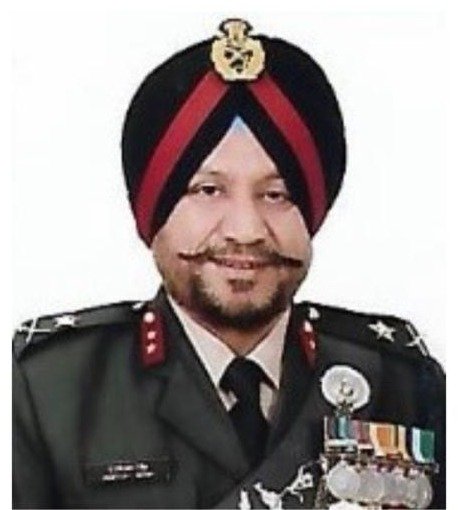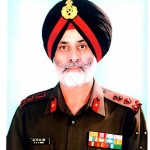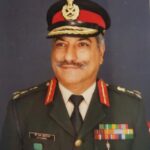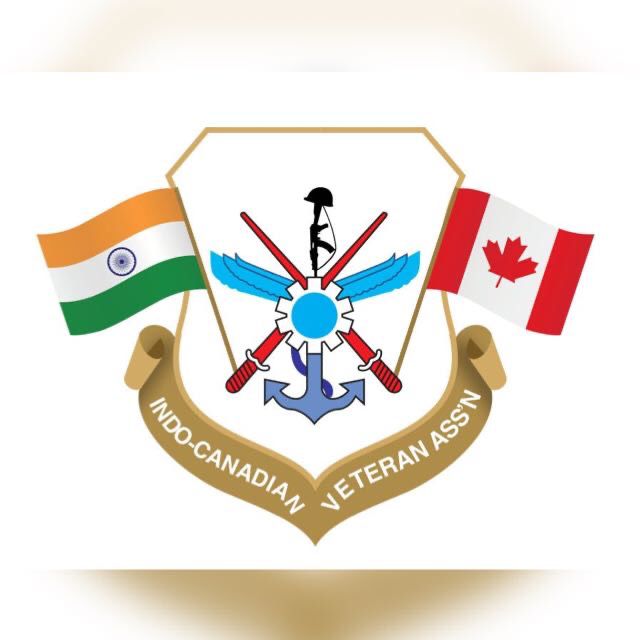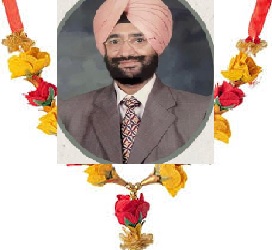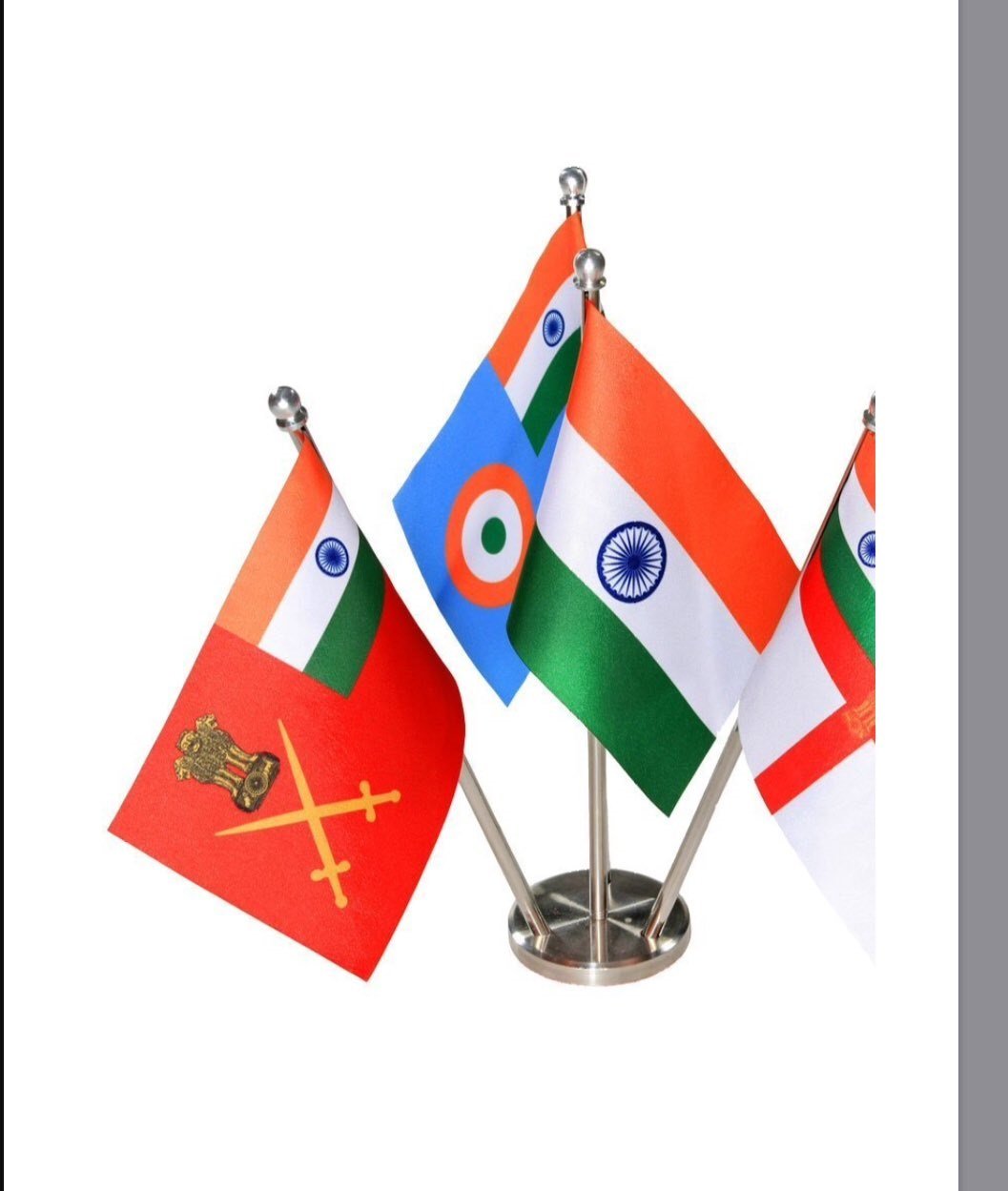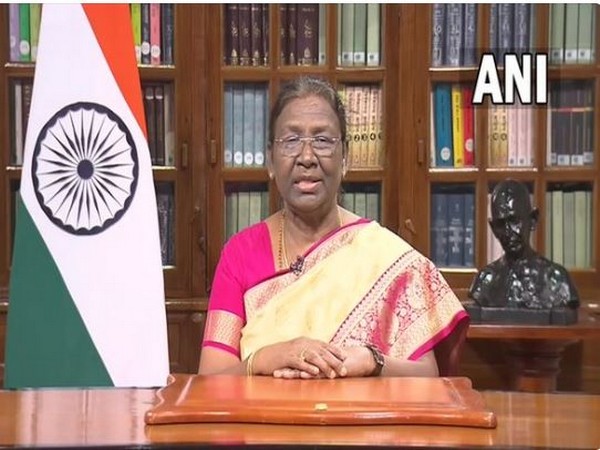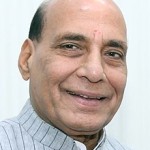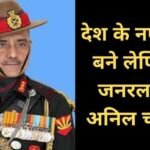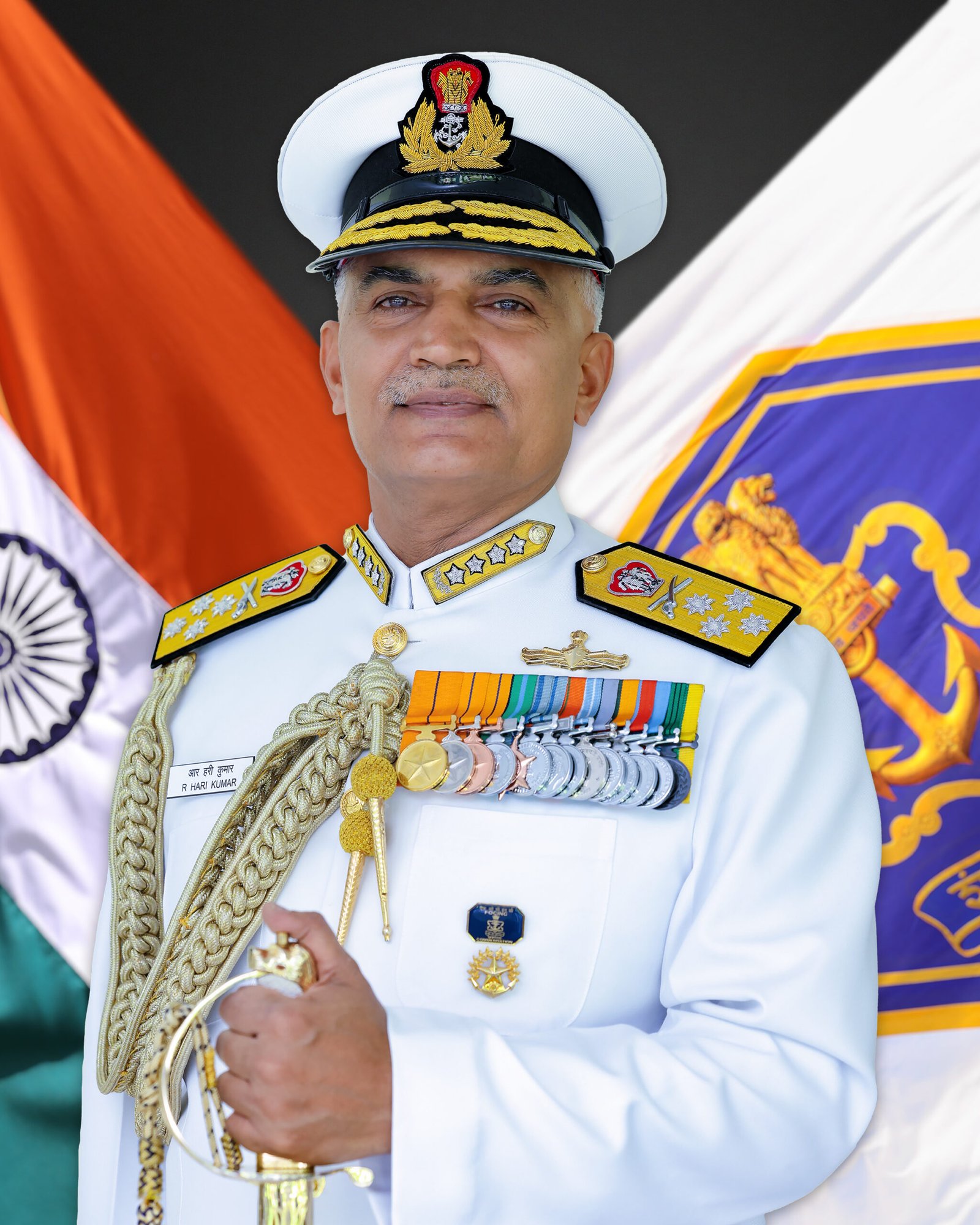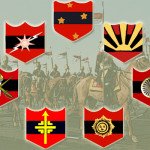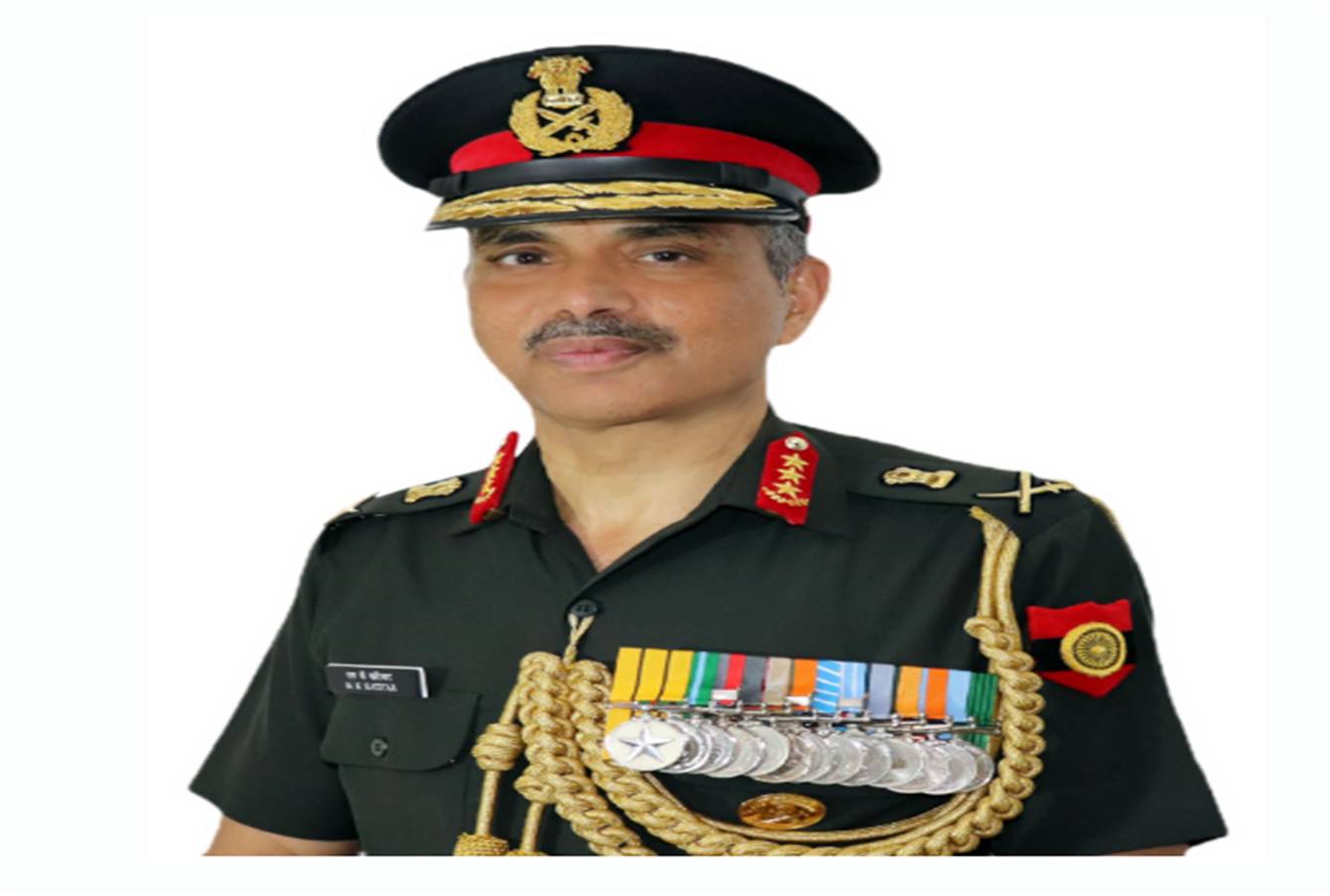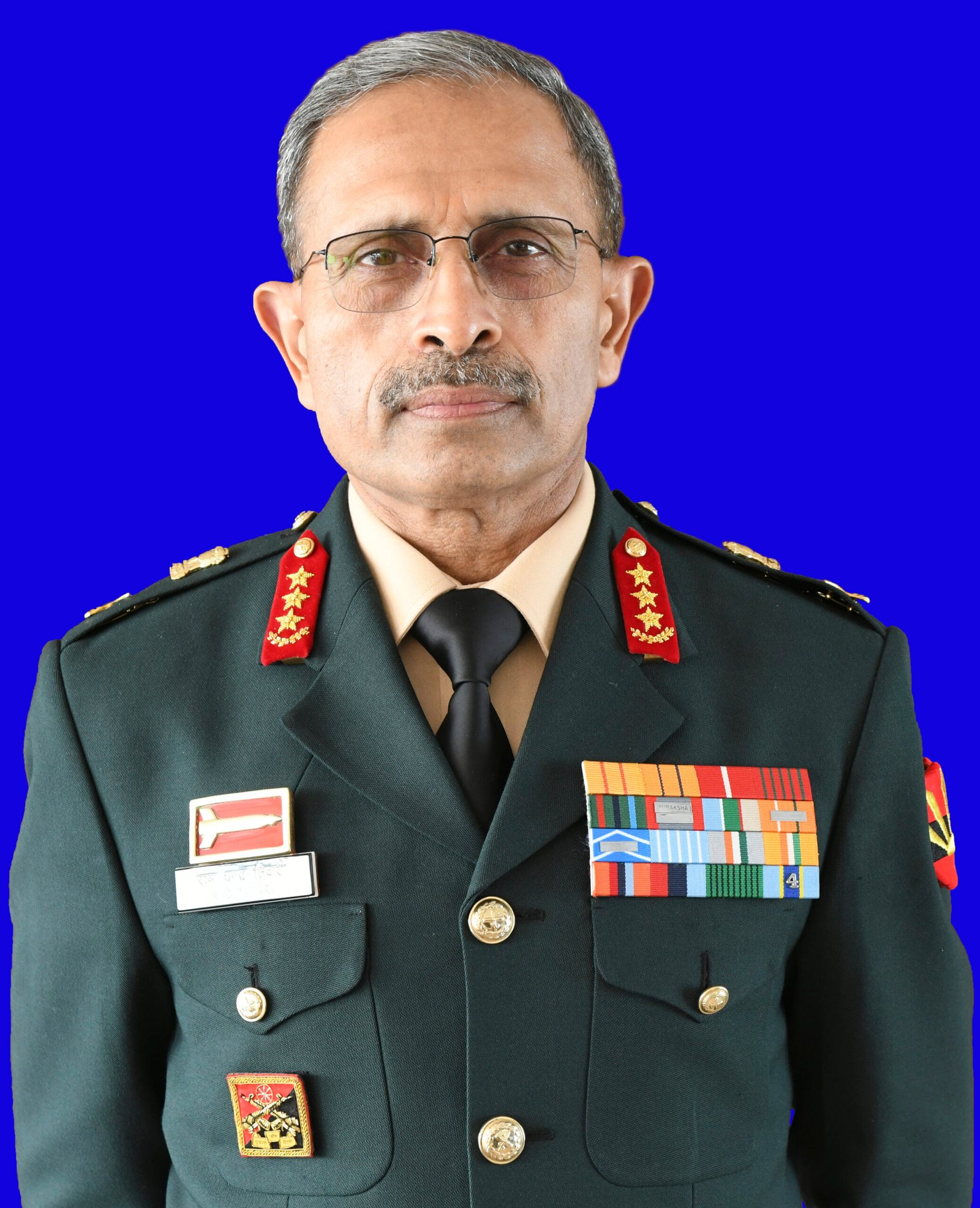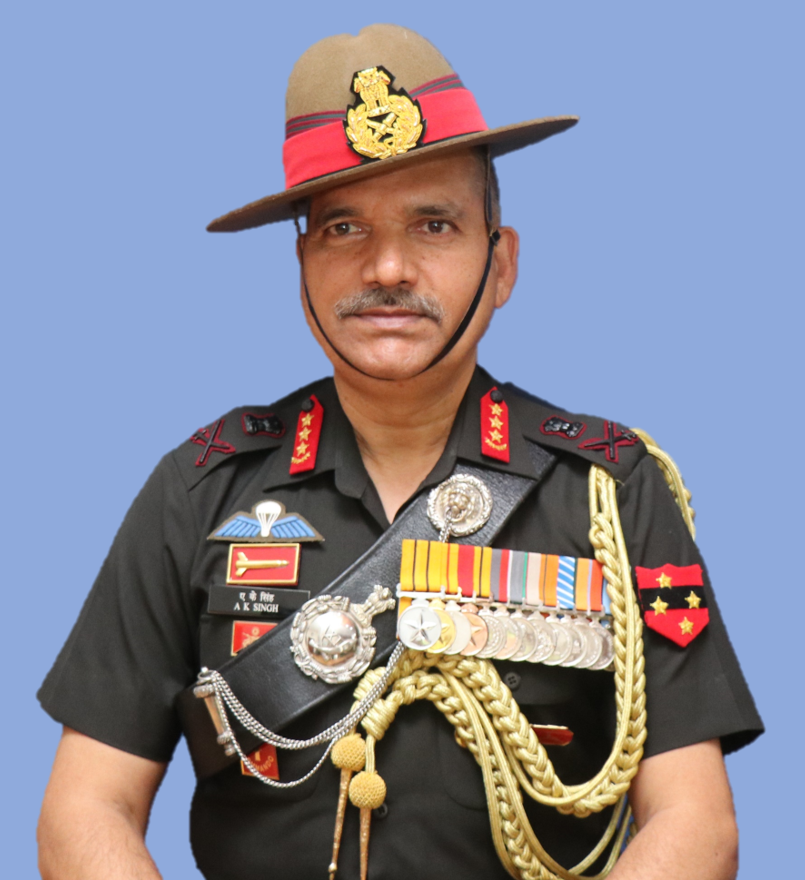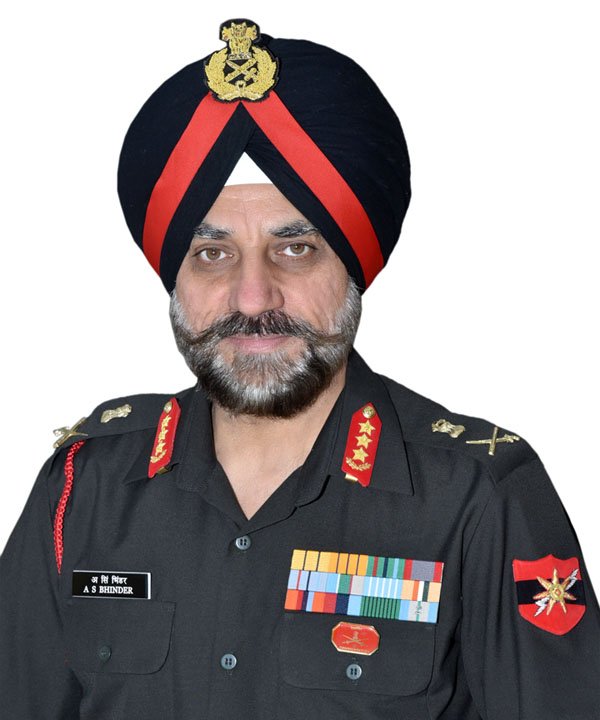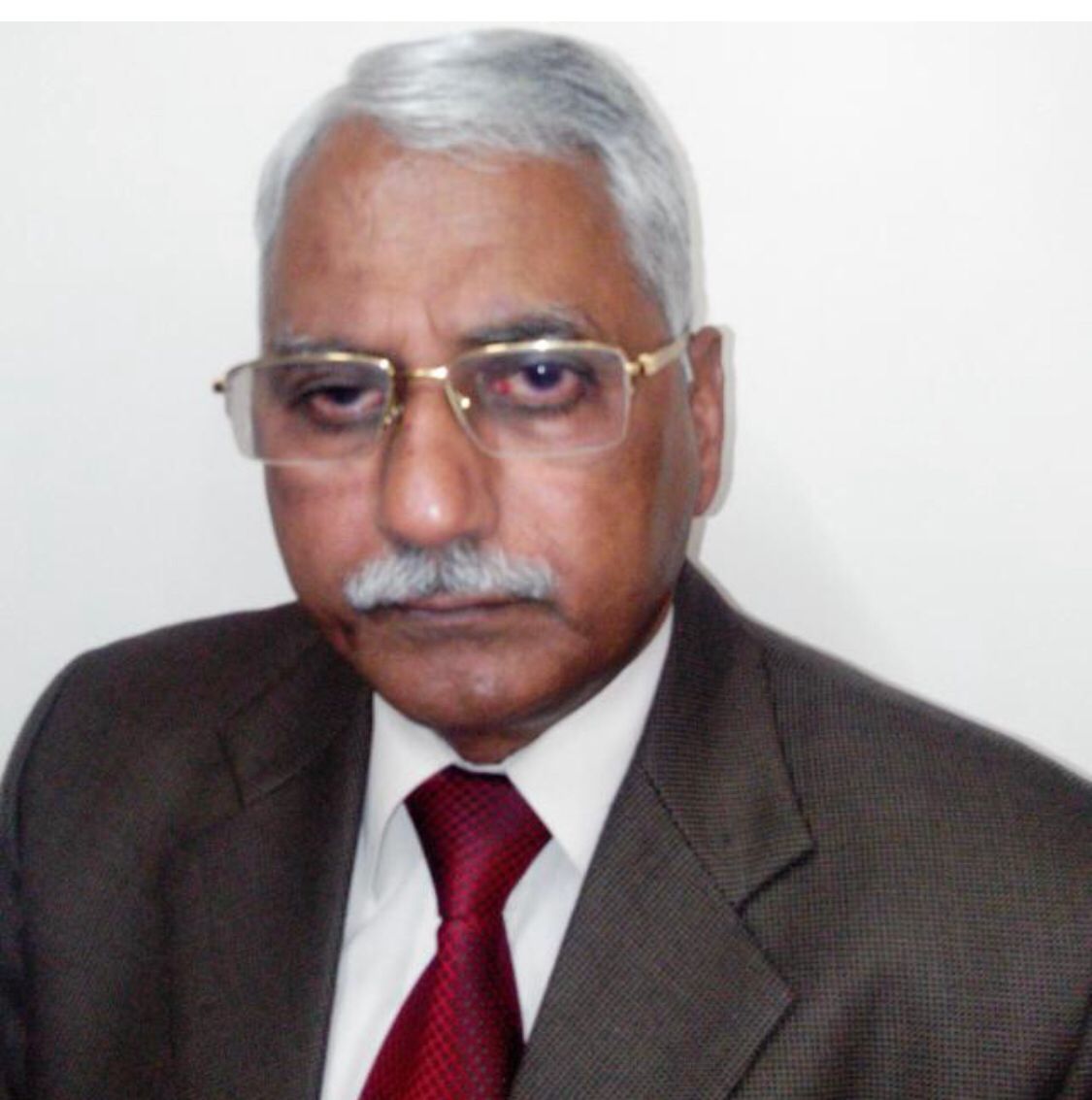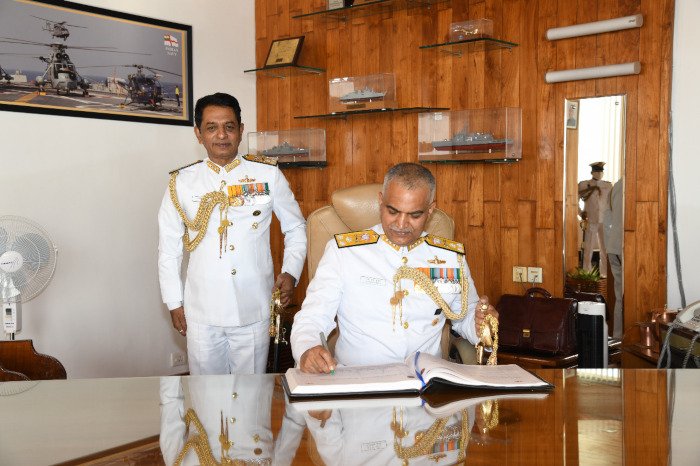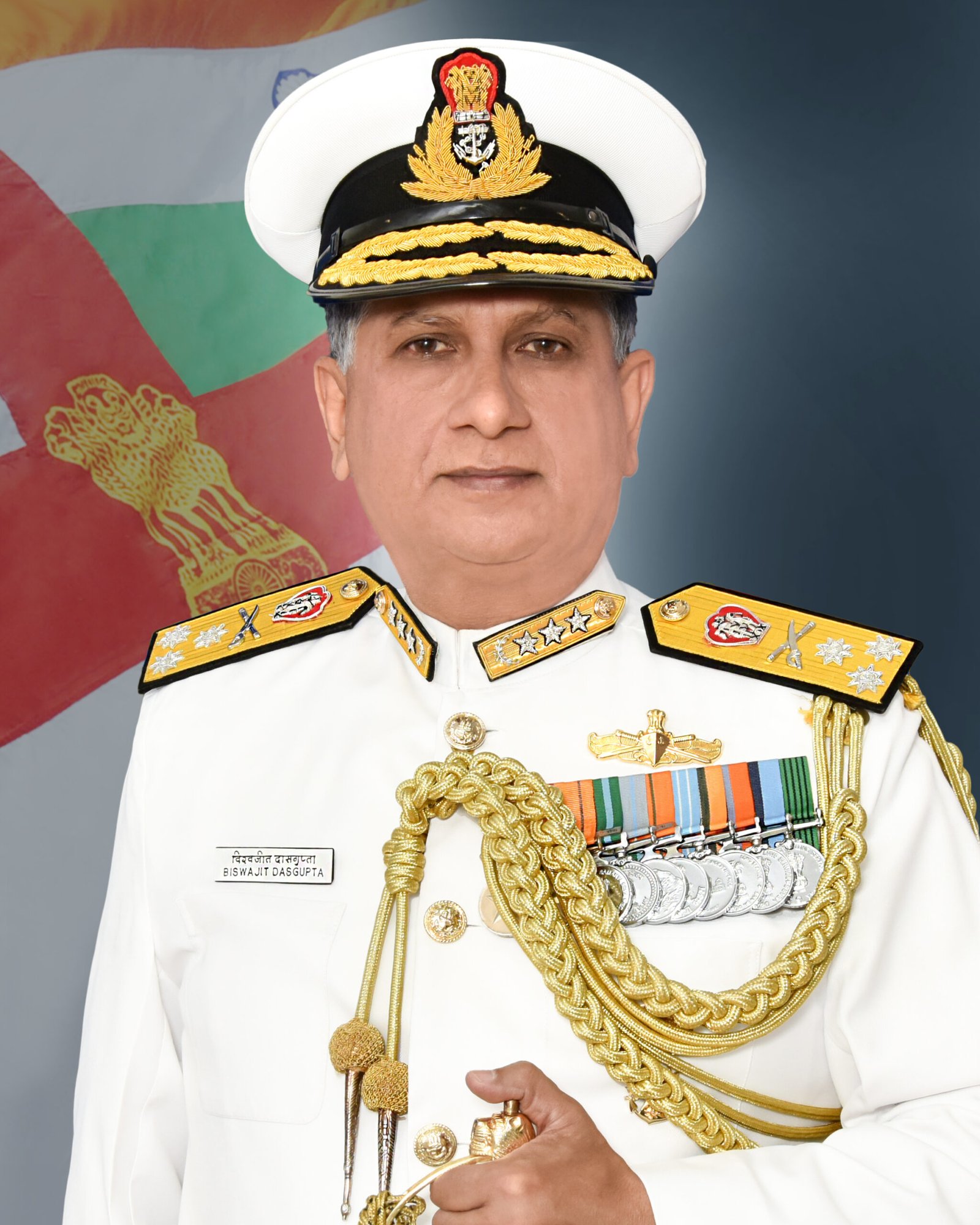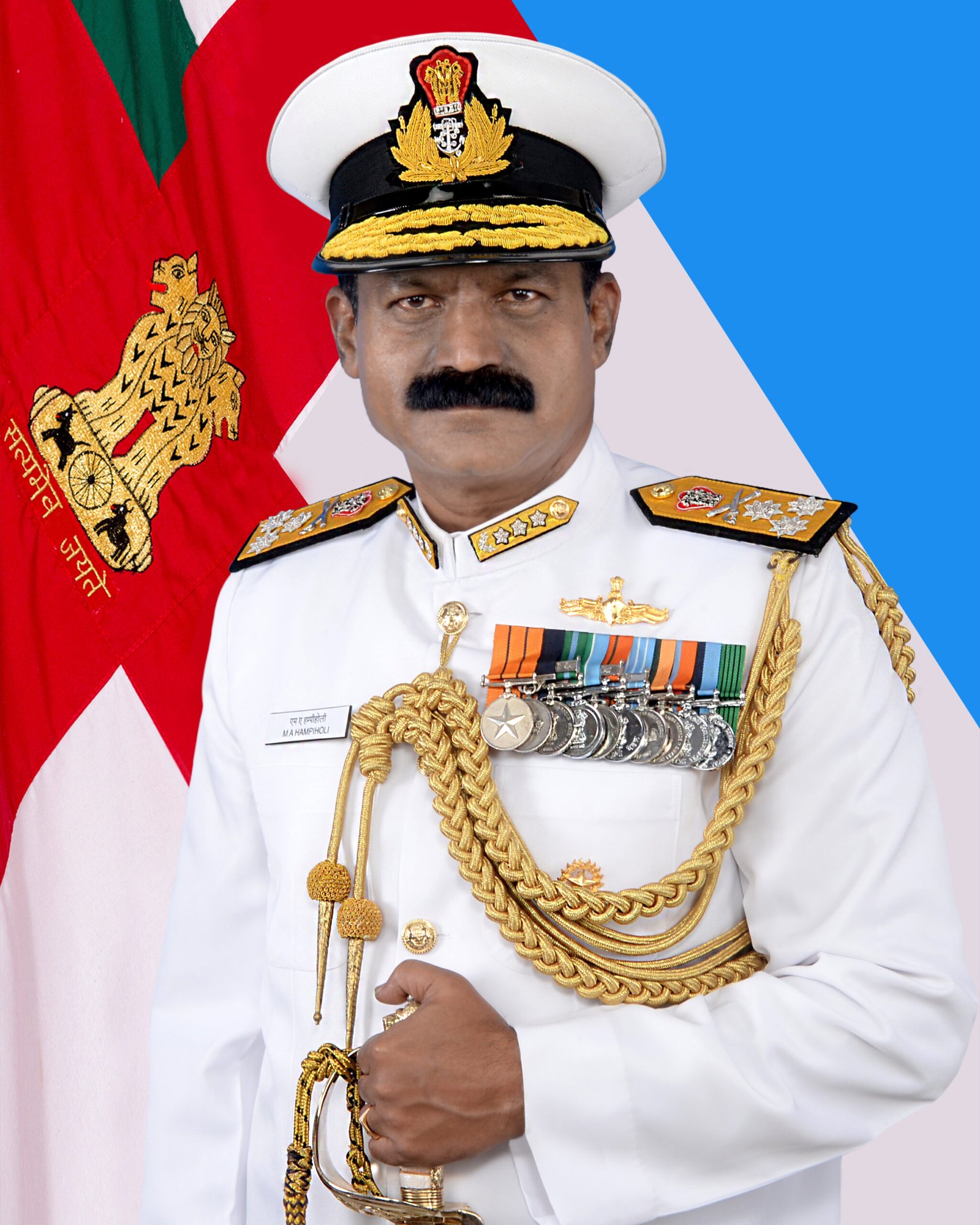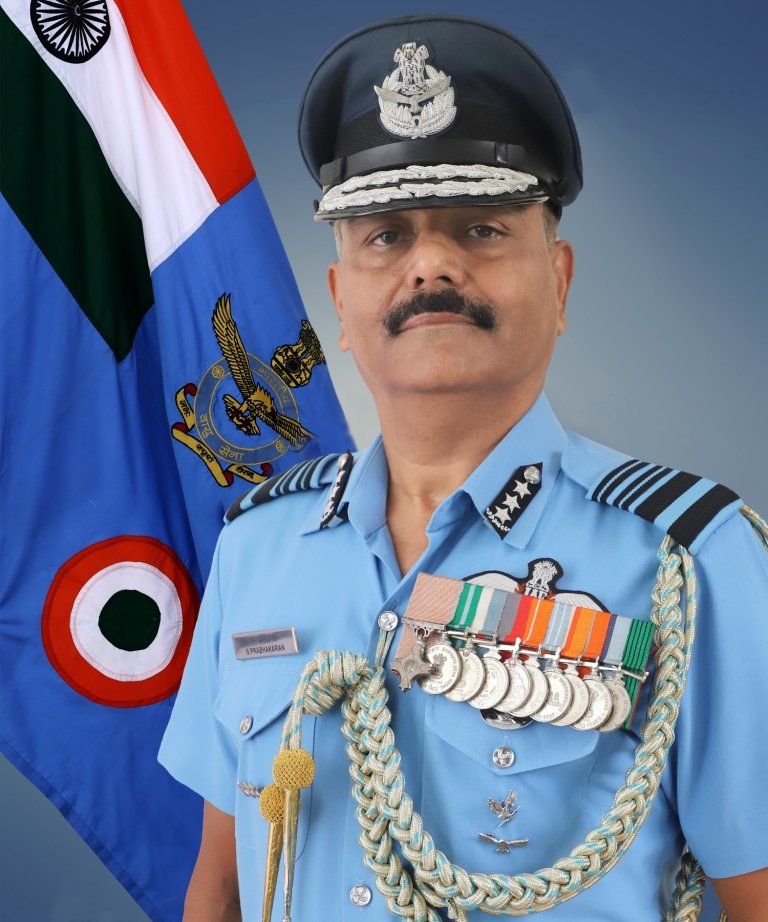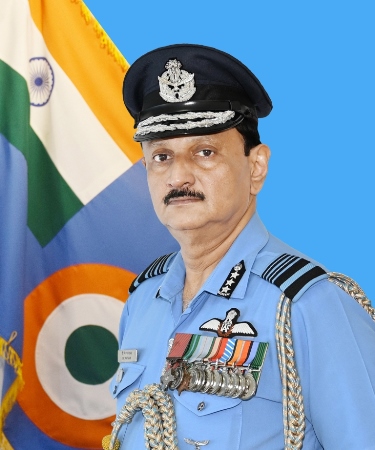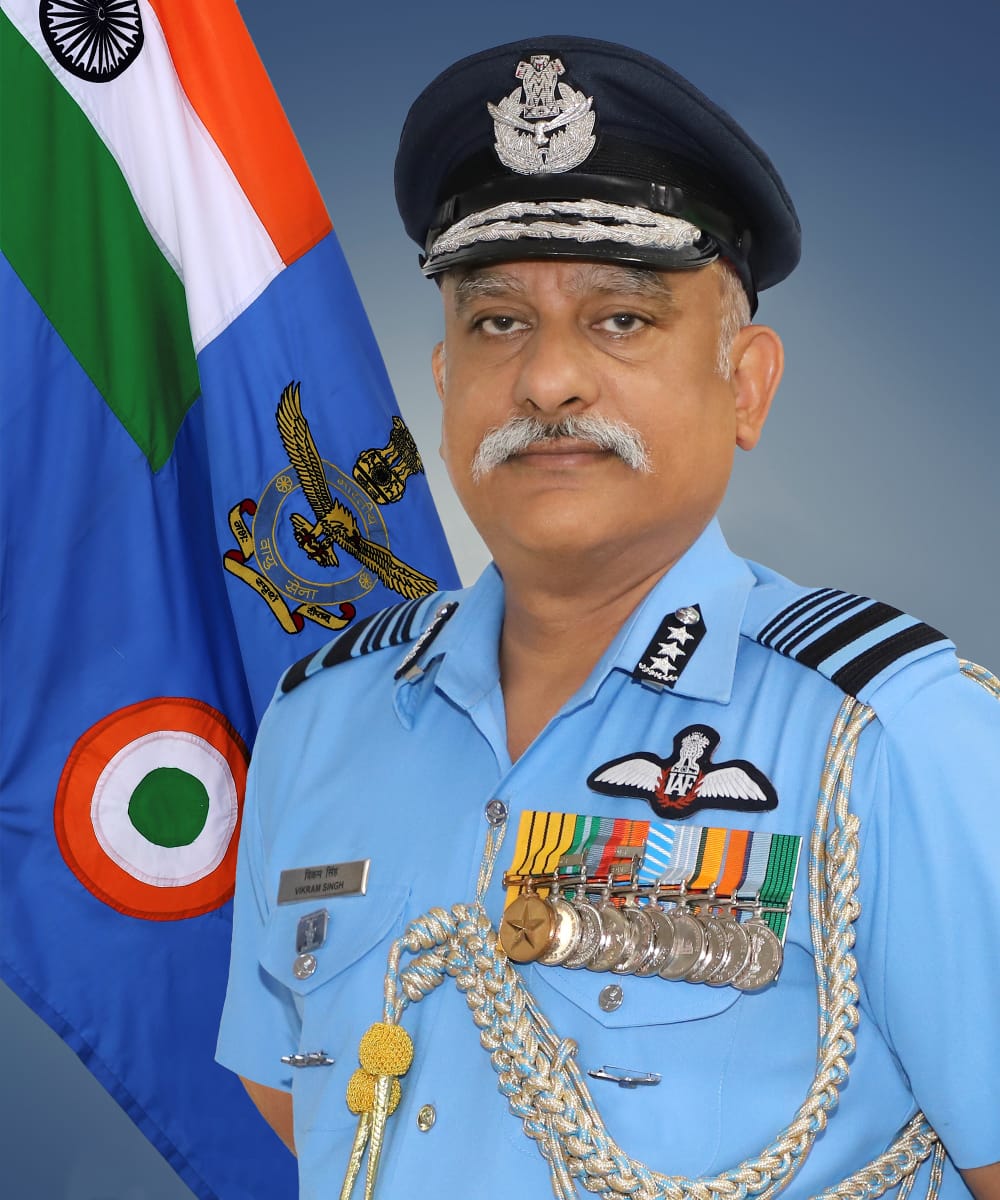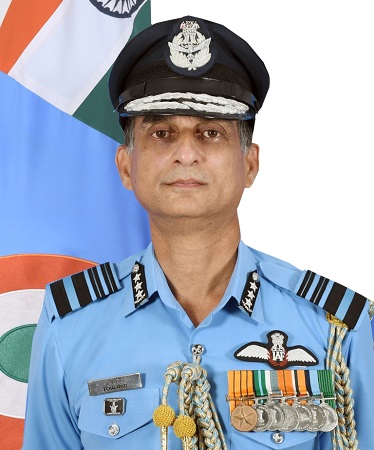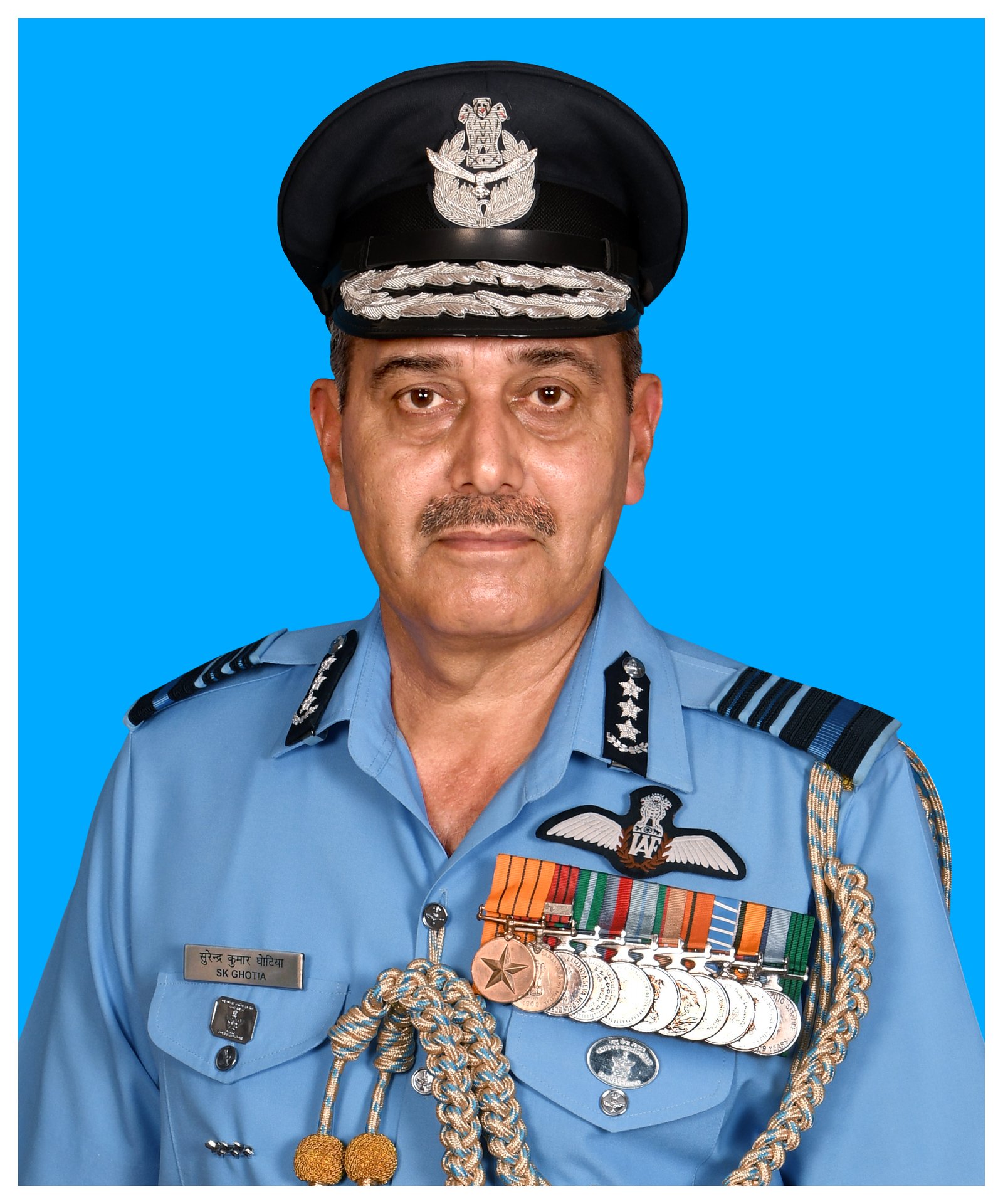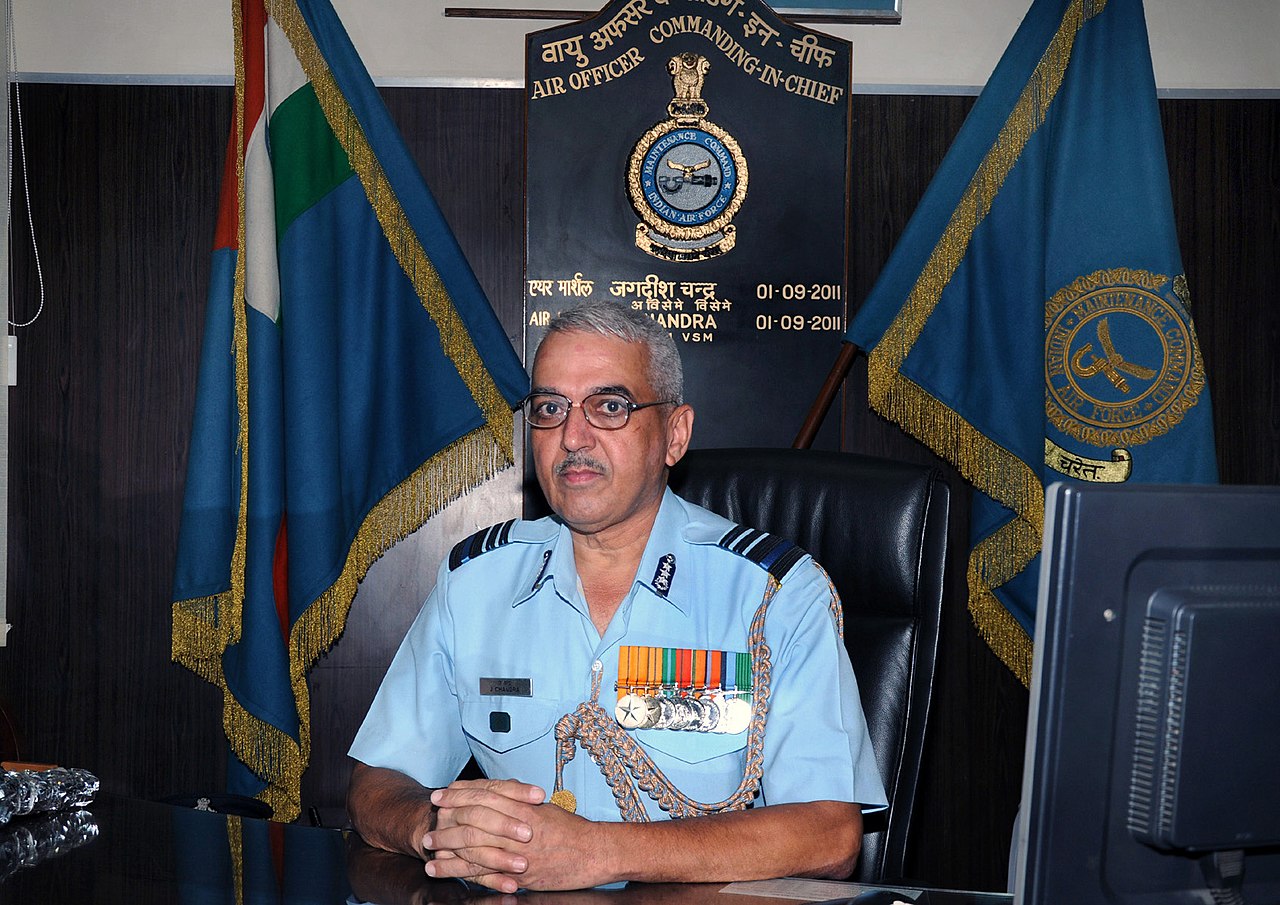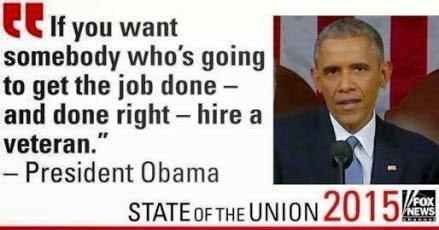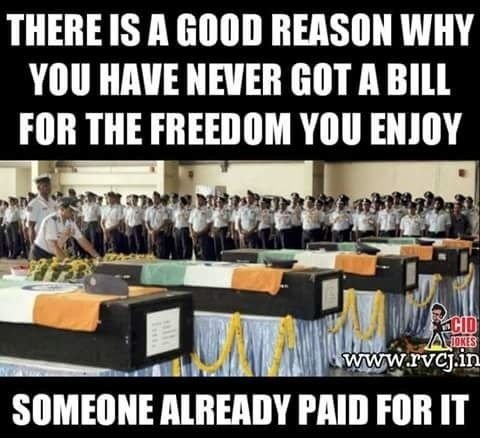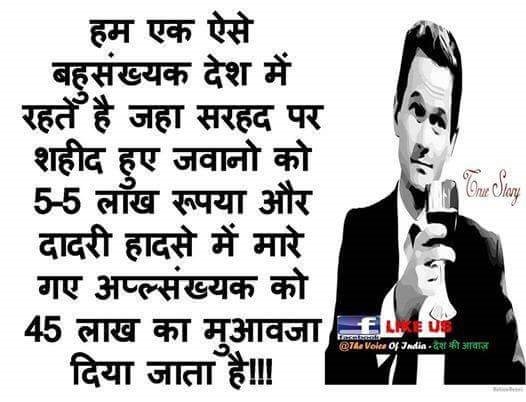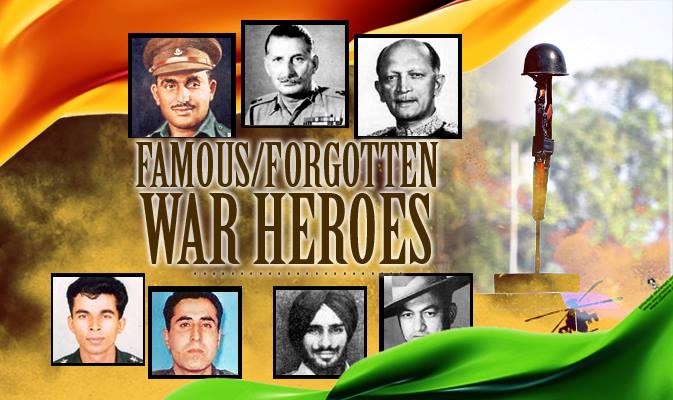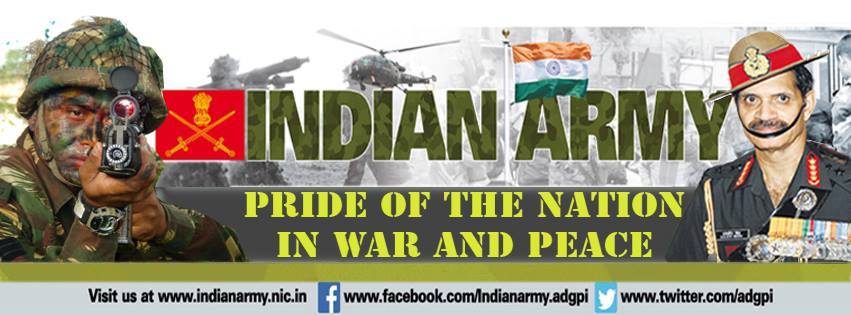Current Events :
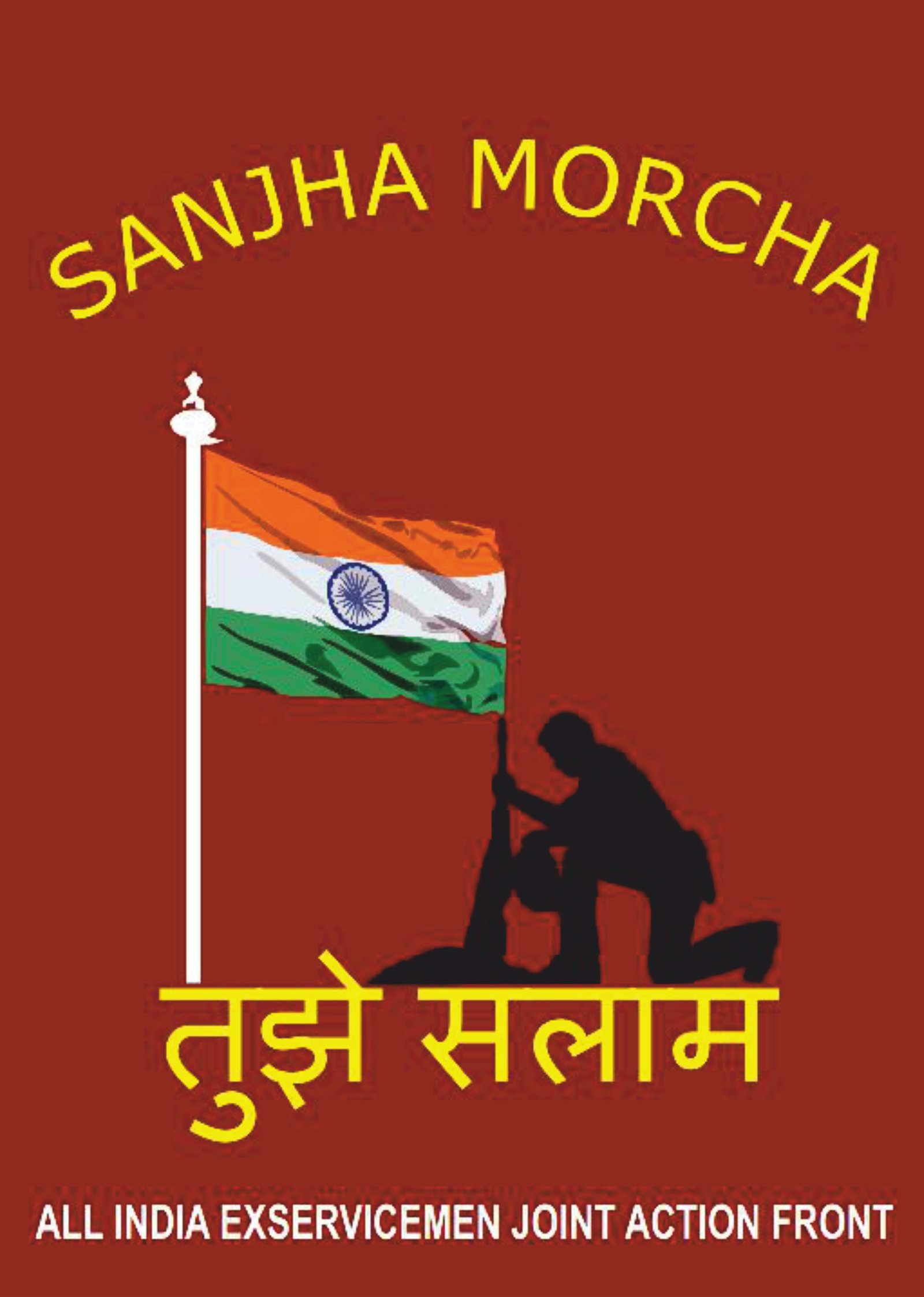
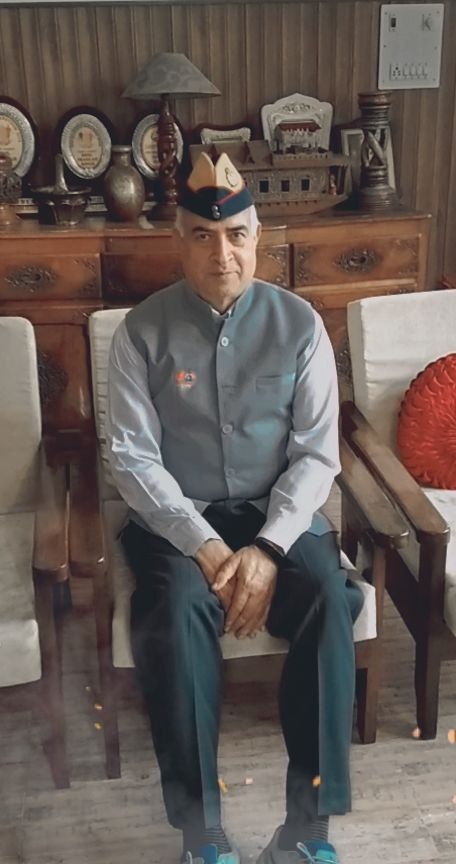





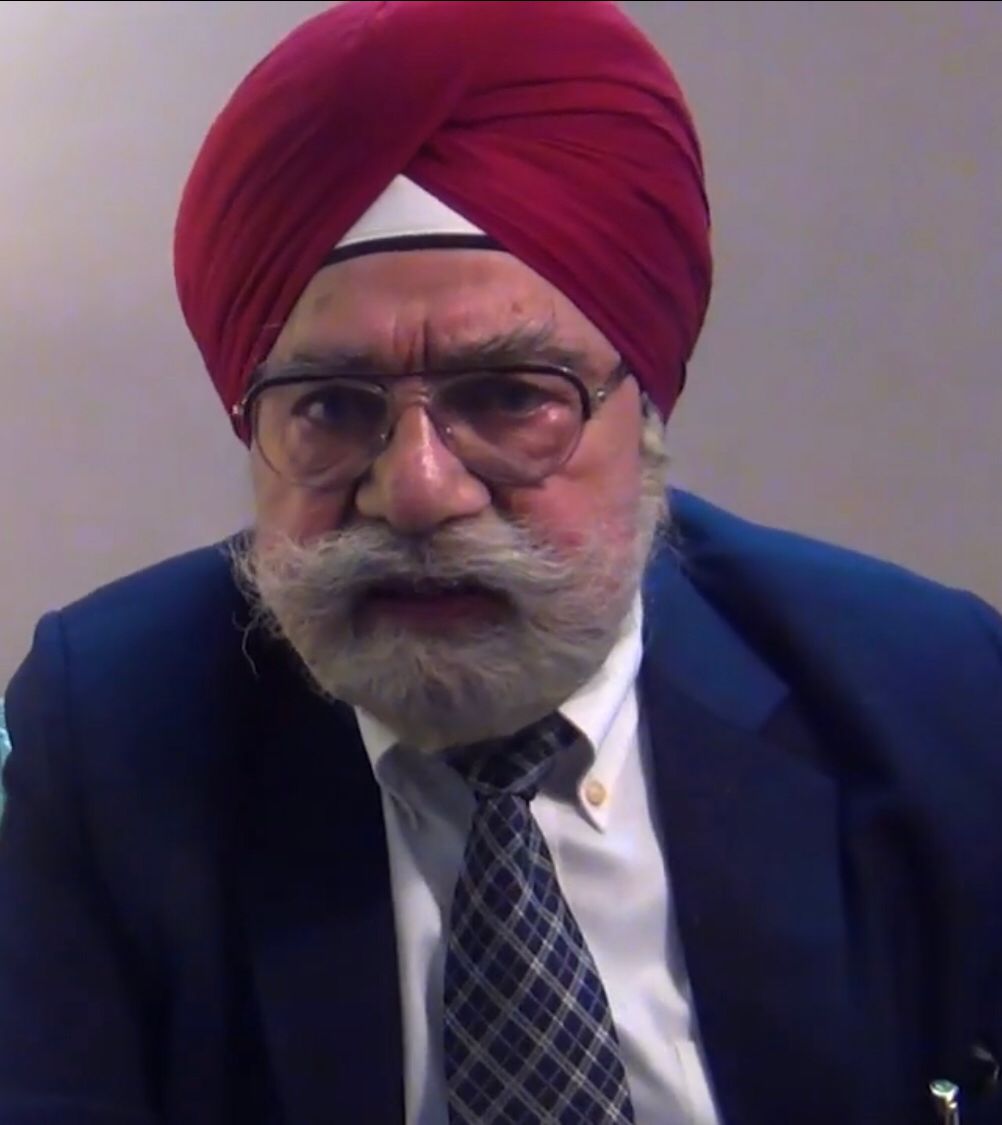


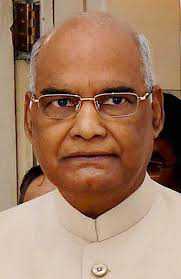
Srinagar, July 24
President Ram Nath Kovind is scheduled to visit the war memorial in the Drass sector on Friday to commemorate the 20th anniversary of the Kargil Vijay Diwas.
He will offer tributes at the Kargil War Memorial in Drass, officials said. He will be accompanied by Army chief Gen Bipin Rawat.
“The President is coming on July 26 and will visit the war memorial where he will offer a wreath. He will be accompanied by the Army chief,” an officer said. — TNS

Col K Thammayya Udupa (Retd)
GP was lost in thought. Two months back, he had rejoined the battalion after a tenure as an instructor in the military academy. He had been eager to return to the battalion and was sure that the Commanding Officer (CO) would promote him to Major against an existing vacancy. But, that day, promotion was the last thing on his mind. His “homecoming” had coincided with the arrival of MM, the new CO. MM had the reputation of being a foul mouth, a hard taskmaster and a tyrant. He knew every rule that had ever been made. He knew everything that a man in the profession of arms ought to know. MM was a perfectionist who would personally visit every nook and cranny of the unit and hold people accountable for any shortcoming. In just a few days, he had made life miserable for everyone.
Those who had worked with him earlier did mention that MM actually had a heart of gold and was often given to a bit of drama. These traits were nowhere to be seen in his present avatar, thought GP wearily. MM had no intention of promoting him. Instead, he had become the object of MM’s sadistic pleasure. MM had appointed GP the Officers’Mess Secretary and wanted the entire Mess to be renovated with only the best things, almost overnight. GP had done his best to bring the Mess to some shape. He had felt confident that it would meet MM’s high standards. But, on the day of the inspection, he was in for a shock; MM had literally torn the new curtains and kicked and shattered the new tiles. He had broken the windowpanes with one swing of his cane and in less than 15 minutes, the Mess was a mess. The perfectionist had pointed out one blemish after another. GP had to accept, grudgingly, that he had missed them all. MM was right. After three such inspections, GP had almost given up. Forget promotion, it was now a question of sheer survival.
GP came back to the real world. He wanted to utilise every minute of the next few hours in carefully checking and re-checking every inch of the Mess before the next inspection later that afternoon. He had requested all junior officers and ladies to go over the Mess again and again and bring to his notice any areas that could be improved.
His heart was pounding when MM arrived with the Second-in-Command (2IC). The news from the battalion was that it was difficult to gauge the old man’s mood. He had been unusually silent all day. And silent he was during the inspection. But the usual smirk on the face was still there, thought GP. “All the shouting and the brickbats is probably reserved for the end,” he thought.
MM inspected everything, the Mess staff’s living area, the new ornamental plants, the new glass-topped tables, the new livery for the waiters, the new guest rooms. Everything.
“2IC,” he thundered. “This Mess Secretary of yours…” The long pause killed not only GP, but also the 2IC. “He does not deserve to be a Captain.” Before they recovered from this onslaught, they heard the same booming voice, “Let us make him a Major.”
MM dug into his pockets and brought out a pair of brand new Major’s epaulettes. Before GP could realise what was happening, MM was upon him, quickly followed by the 2IC and in a flash both of them had slipped the new epaulettes on his shoulders. “Good job done, GP, we now have a good Officers” Mess. Keep up the good work. You have a bright future.” Even before GP could recover from the shock and offer a customary promotion drink to all those who were around, MM had vanished, rushing back to his office to make some other poor, pitiable officer earn his rank.
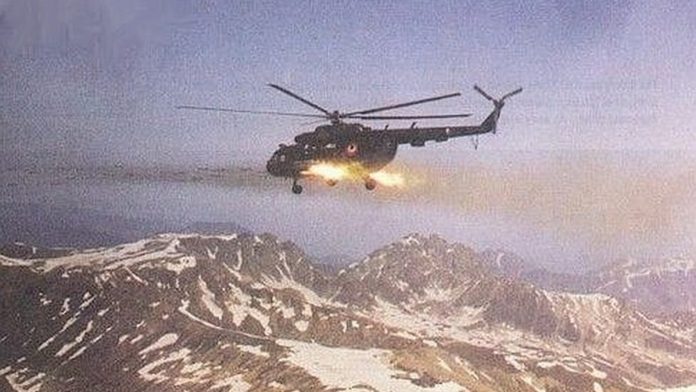
Today, 16 July, marks the day when Operation Safed Sagar, the air component of Operation Vijay that was launched to evict the Pakistanis from Kargil heights, was called off. The Indian Army was then closing in on the remaining few peaks that still had the intruders, and so, air strikes were no longer required.
Op Safed Sagar heralded a few firsts in the history of the Indian Air Force, but two elements stand out – the use of offensive air power at the altitudes of 15,000-18,000 feet; and the use of precision weapons by the IAF for the first time. Embedded in these firsts are some little-known facts about the IAF’s use of helicopters that need a fresh look.
Soon after 8 May 1999, it became clear that Pakistan had sprung a surprise on India by capturing vantage hill posts in Kargil that the Indian Army had vacated earlier in the winters.
In the initial stages of the conflict, helicopters were planned to be used as the primary strike weapons against intruders housed at sangars (encampments made of rocks and boulders that could only be damaged by a direct hit – as Mirage LGB strike on Tiger Hill later showed). So, it was felt that the slow-moving helicopters (at just about 180 km/hr) would be more precise in bringing down firepower and inflicting damage on those pinhead targets that were, in a way, almost impossible to be picked up by a fighter aircraft diving in at 700-800 km/hour. But the helicopters’ slow speed would make them sitting ducks to small arms fire: by the time they pulled out from their dive after firing the rockets, they would be less than one kilometre from their targets.
Also read: In 1990, there was another daring rescue of an IAF helicopter from Siachen Glacier
That Pakistan had in its armoury shoulder-fired surface-to-air-missiles (SAMs) was known but we were to soon find out the copious density of their availability – with tragic results. Counter-Measures Dispensing System (CMDS) release flares. As infra-red seeking SAMs follow their targets based on heat, they would go after the flares fired by CMDS instead of the helicopter. The IAF had only about four or five CMDS kits available to be strapped on to the helicopters, and an equal number of armour plates to protect the cockpits. It was decided that the first helicopter would have both CMDS kit and armour plates, while others would have to do with some deficiency. A plan was drawn that a fighter strike would closely precede a helicopter mission so that their heavy ordnance delivery would force Pakistani intruders to keep their heads down while the helicopters came in for their attack run.
On 26 May, two helicopter missions, comprising five and four aircraft, respectively, went in; each Mi-17, firing protective flares (if it had the CMDS), disgorged its 57mm rockets in salvo mode – all 128 of them. Before the enemy soldier could put his head up, the next Mi-17 came in and fired its 128 rockets – and the next and the next. Two more waves comprising six aircraft fired on Tololing and Kaksar on 27 May. Around this time, the IAF lost a MiG-27, when Flight Lieutenant Kambampati Nachiketa ejected after an engine failure. What followed is not well known.
A Cheetah helicopter piloted by Squadron leader H.K. Sachdeva and Flight Lieutenant Nitin Welde was launched from Leh for Nachiketa’s search and rescue. With only sketchy information on the likely area of ejection, the crew searched for about 20 minutes before landing to ask villagers if they had seen any aircraft or parachute coming down. The villagers pointed to yador nulla, which, unknown to them, was teeming with intruders armed with SAMs. Sachdeva and Nitin flew around looking for Nachiketa, blissfully unaware of the SAMs’ threat: nothing was spotted, and with fuel running short, they came back to Kargil.
Also read: India’s first pilot to land on Siachen recounts how his life was saved by Army comrades
Upon their return, they were told about the ejection of Squadron leader Ajay Ahuja, the MiG-21 pilot who had kept orbiting in search of Nachiketa: a SAM had brought down his aircraft. Two more Cheetahs joined the search, but in hindsight, one can see the futility as both pilots had been captured by the Pakistanis. As is now well known, Nachiketa was sent back after a week but Ahuja was brutally tortured and killed.
Mi-17s continued to be in action on 28 May. A six aircraft mission was planned, with Wing Commander Anil Sinha, CO of 129 Helicopter Unit, leading the strike. On start-up, his aircraft went unserviceable; Sinha jumped into the second aircraft, taking over from its pilot. Squadron leader Rajiv Pundir’s aircraft too developed some emergency and he went into the third helicopter, replacing Flight Lieutenant Kulkarni. The four-ship mission took off and struck the Tololing complex. SAMs were being fired at each helicopter in the formation, but the CMDS flares deflected them – except for Pundir’s helicopter, the only one in the formation that did not have a CMDS. It got hit and crashed with four brave Indians on board. The IAF took a strategic pause and readapted quickly to the SAM threat. Fighter aircraft took to high-level GPS‑aided bombing, staying out of the SAMs’ envelope thereafter.
Mi-17 helicopters were taken off from strike missions — this is what is known to all, except that in June, they were brought back for an audacious night attack plan on Tiger Hill. The battle for Tiger Hill was hotting up and Wing Commander Sanjay Mittal, commanding officer (CO) of 152 Helicopter Unit, was tasked for the strike. At night, hills and valleys appear very different due to hill shadows and differing light conditions as the moon rises. Mittal did some familiarisation flying post-midnight, including crossing the treacherous Zoji La pass and firing-practice at Toshe Maidan range. On 27 June, he and Squadron leader Arvind Pandey got airborne for Tiger Hill; crossing Zoji La, they orientated themselves for the run-in with the target. The moon was up, visibility was unlimited, and the Mi-17 settled down for spewing its deadly load of rockets.
Suddenly, there was a huge bright flash — possibly the firing of a SAM. The pilots went into a steep dive, firing their protective flares; the missile got deflected but the helicopter had to return since its cover was broken. The mission was planned the next two nights too but was called off due to operational reasons, once after the helicopter had reached Zoji La. In the meantime, the Army jawans had made substantial progress and the IAF had honed up its precision Laser Guided Bomb (LGB) delivery and the Mi-17 night attack was no longer required.
Also read: At IAF’s Gwalior base, Mirages attack ‘Tiger Hill’ to celebrate 20 years of Kargil success
Meanwhile, other Mi-17s were busy transporting troops, airlifting artillery guns and other war stores. Cheetahs were flying incessantly and acting as Forward Air Controllers (FAC) for fighter strikes. Additionally, both these fleet were continuously flying back injured troops to the military hospital at Srinagar; there were 1,343 Indian Army personnel who were hurt – half of them, 700 or so, were flown out to safety by IAF helicopters.
As the IAF and the nation commemorate 20 years of ‘Kargil,’ what is it that one needs to learn from the deadly skirmish that claimed 524 Indians in 1999? The biggest takeaway is that good, reliable and timely intelligence is vital to prevent being presented with a fait accompli. The way India and its neighbours are placed, it is crucial that our actions are well-rehearsed to avoid losses that we have been incurring in the initial stages of a conflict.
In the 1965 war, 12 Vampire fighters were launched from Pathankot to stop the Pakistani advance on Chammb in the Akhnoor sector — but they slowed down the thrust, with four of them getting shot down. The aircraft, owing to their vintage nature and the Pakistan Air Force’s modern F-86 that they were up against, were withdrawn and replaced by Mystères, Hunters and Gnats. The IAF learnt from its mistakes, adapted quickly, and came out with its head held high. In the 1971 Bangladesh war, the lessons learnt from six years ago held us in good stead because the IAF had modernised itself during this period.
In ‘Kargil,’ after losing three aircraft in the first three days, the IAF adapted and came out on top again. This year, in the February skirmish after the Balakot airstrikes, two aircraft were lost on the first day. Had the conflict continued, the IAF would have done a quick reappraisal and handled the air war appropriately. Future conflicts would, in all probability, be short and swift. Engagements in the initial few hours and days are vital – the results need to be favourable in that short window because time for a ‘strategic pause’ to do a reappraisal may not be available.
Also read: These 5 Indian Army, IAF heroes are the faces of the Kargil conflict
An even more important point is that with network-centric warfare becoming the norm (some of it was seen in February), it would not be just the pilot or the pilot-radar-fighter-controller that has to perform at the first instance; aerial engagements would be between ‘systems’ – in any future war, the full ‘system’ would have to perform from the word go, with the pilot being just one cog in it.
As we commemorate Kargil, the greatest tribute to all those Indians who laid down their lives at those daunting heights, as also to those who fought there, would be to fine-tune how we approach future wars. That’s the least we can do.
The author, a retired Air Vice Marshal, is Additional Director General, Centre for Air Power Studies, New Delhi. He has served two tenures in the Siachen Pioneers – first as a Flying Officer between 1978 – 82 and then as the Commanding Officer from 1994 to 1997. He was the co‑pilot on the first landing on the Glacier – 06 Oct 1978. Views are personal.
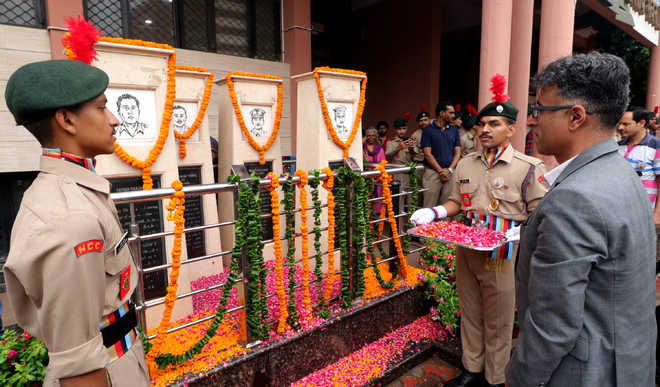
Chandigarh, July 12
DAV College, Sector 10, Chandigarh, in association with the 13th JAK RIF (Kargil) celebrated the Kargil Vijay Diwas today to commemorate fallen heroes in Operation Vijay.
Capt Vikram Batra, PVC (P), a braveheart who sacrificed his life was an alumini and also an NCC Air Wing Cadet of DAV College.
The motorcycle expedition of the 13th Battalion Jammu and Kashmir Rifles on a tour from Mana Pass to Drass War Memorial reached DAV College.
Maj Gen RS Mann, VSM ADG, NCC, was the chief guest on the occasion.
DAV Principal Dr Pawan Kumar Sharma said, “Emotions create nations and define integrity of the country. It is a very proud moment for me and I welcome all the luminaries and salute the martyrs and soldiers.”
Maj Gen Mann honoured Vishal Batra, who is the twin brother of Capt Vikram Batra, Harbans Sagar, father of Major Sandeep Sagar, DS Sandhu, father of 2Lt Rajeev Sandhu and JC Kasal, father of Squadron Leader Sidhharth Vashisth. — TNS
“Pakistan army time and again resorts to misadventure either through flawed proxy wars and state-sponsored terror or intrusions. Indian Army stands resolute to defend our territory. Let there be no doubt that any misadventure will be repelled with a punitive response,” Rawat said on the sidelines of an event.
He further said that future conflicts would be more violent and unpredictable, “where the importance of human factor shall remain undiminished”. “Our soldiers are and will remain our primary assets, the Army chief added.
Speaking about activities on border with China, Rawat said that there we no intrusions on Line of Actual Control (LAC).
“Chinese come and patrol to their perceived Line of Actual Control (LAC)…we try and prevent them. But at times there are celebrations that take place at the local levels. Celebrations were going on our side by our Tibetans in the Demchok sector. Based on that, some Chinese also came to see what was happening. But there has been no intrusions. Everything is normal,” he said.
His statement comes amidst reports of Chinese soldiers crossing the LAC last week after some Tibetans hoisted Tibetan flags on the occasion of Dalai Lama’s birthday on July 6.
India and China share a disputed border and the armies of the two countries were engaged in a stand-off for 73 days in 2017 in Doklam.
Rawat said both sides have different perspectives on the LAC. “There are gaps in between. So both sides patrol and come into each other’s areas. Chinese come and patrol to their perceived LAC which we try and prevent. We try and attempt to reach out to LAC or based on the limit of patrolling given to us, we visit those areas,” he said.
South Block sources had on Friday said some 11 Chinese in civilian clothes arrived in two vehicles when Ladakhi villagers were celebrating Dalai Lama’s birthday on July 6. They then showed them banners and waited there for 30-40 minutes but did not cross the Line of Actual Control, they said. The Tibetans were celebrating the 84th birthday of the Dalai Lama.
“At times, there are celebrations that take place at the local level. Celebrations were going on our side by our Tibetans in the Demchok sector. Based on that, some Chinese also came to see what was happening,” Rawat said.
When asked whether the Chinese People’s Liberation Army (PLA) soldiers were present during the July 6 incident, he said security officials from both sides accompany civilians whenever they go the LAC.
“…when the civilians go forward, obviously there will be PLA and when our civilians go to LAC, the ITBP (Indo-Tibetan Border Police) or the Army will accompany them. We are not going to allow the civilians to go the LAC without being monitored. So, both sides will monitor,” he said.
The matter was also raised in the flag meetings between the security officials of the two countries, the Army Chief said.
“Everything is normal. You need to dispel this myth that there has been any kind of intrusion or activity by the Chinese which is detrimental to our security,” he said.
“We have a very good working relationship with the Chinese. Anytime such things happen, we have the local commanders talking to each other. We are meeting regularly,” he added.
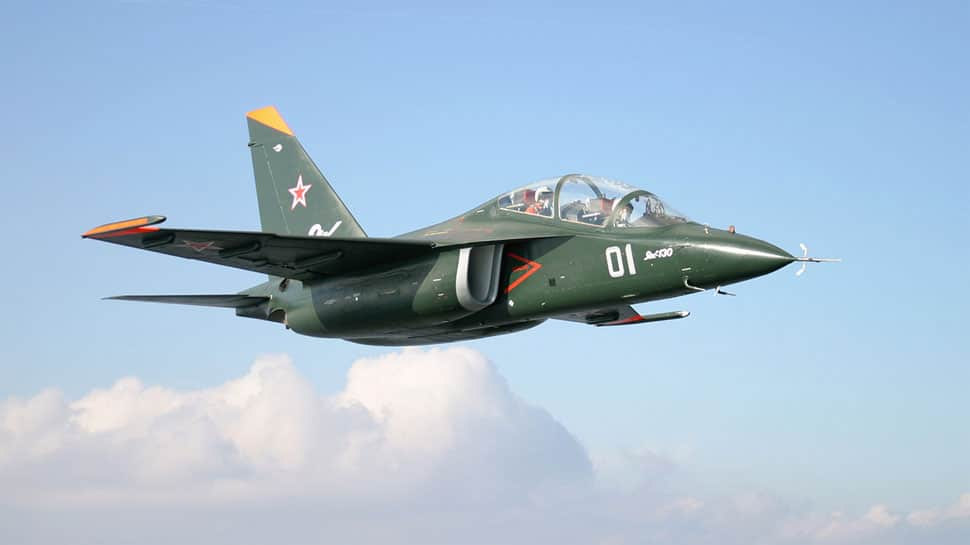
Indian Air Force Chief Air Chief Marshal Birender Singh Dhanoa will fly in the Yakovlev YAK-130 Mitten Advanced Jet Trainer during his July 9-12 visit to Russia. The Air Chief Marshal, who is also the Chairman of the Chiefs of Staff Committee by virtue of being the senior-most chief of staff among the three heads of Indian armed forces, is undertaking a bilateral goodwill visit to Russia for four days.
According to the IAF, ACM Dhanoa will meet senior officers of the Russian Armed Forces and his visit will provide one more opportunity to the two countries to strengthen their bilateral and defence relations. ACM Dhanoa’s sortie in the YAK-13, which can also be used as a light-attack aircraft, assumes great significance as IAF is short of advanced jet trainers to adequately hone the skills of its fighter pilots.
Russian Air Force pilots receive their training on the YAK-130 and according to its officials, the aircraft can replicate characteristics of even highly advanced 4++ generation fighters and even the fifth-generation Sukhoi Su-57 which is currently under development and testing.
According to JSC Rosoboronexport, Russia’s only state agency for defence-related products, the YAK-130 can perform flight and operational training as well as undertake combat missions. “The aircraft is used to develop and improve pilot skills needed to fly, navigate and employ current and advanced combat aircraft. The YK-130 can be effective as a light attack aircraft in engaging air and ground (surface) targets,” the product catalogue on Rosoboronexport website states.
Equipped with a modern flight-control-navigation, communications, cockpit instrumentation and other equipment, including a quad-redundant fly-by-wire flight control system, the YAK-130 has high training effectiveness. The aircraft is also capable of carrying air-to-air missiles, guided air bombs, unguided rockets and bombs, external fuel tanks, gun and EW pods. It has nine hardpoints and can carry missiles and bombs weighing 3,000 kg.
Capable of flying at a maximum speed of 1060 kmph, the YAK-130 has a service ceiling of 12,500 metres. It can attack at flight angles of 35 degrees and has a maximum operating range of 1,600 km which can go up to 2,100 km with external fuel tanks. The aircraft’s maximum takeoff weight is 10,290 kg and it is powered by a single Ivchenko-Progress AI-222-25 engine. The plane is 11.49 m long, 4.76 m high with a wingspan of 9.84 m. Its manoeuvrable load factor is +8/-3 g.
The IAF currently uses several trainer aircraft like Pilatus PC-7 MkII and Hawk Advanced Jet Trainer but is desperately in need of more jets. Between 2014-15 and July 3, 2019-20, the IAF has lost 26 fighters, six helicopters, nine trainers and four transport aircraft to air crashes. The force also lost 46 air warriors including 12 pilots during the same period.
Union Budget 2020 – No change in Income Tax Slab
“Those having annual income upto Rs. 5 lakh are not required to pay any income tax”
Tax rates for individuals having taxable income from Rs. 2 cr – 5 cr and Rs. 5 cr & above to be increased by around 3 % and 7 % respectively
Direct Tax revenue increases by over 78 % in FY2018-19 from FY 2013-14; rose to Rs. 11.37 lakh crore from Rs. 6.38 lakh crore Relief proposed in Levy of Securities Transaction Tax (STT) Additional deduction of up to Rs.1.5 lakh for interest paid on loans for purchase of affordable house Additional Income Tax deduction of Rs. 1.5 lakh on interest paid on loans taken to purchase Electric Vehicles
The effective tax rates for the higher income group individuals having taxable income from Rs. 2 crore to Rs. 5 crore and Rs. 5 crore and above is proposed to be increased by around 3 percent and 7 percent respectively. Presenting the General Budget 2019-20 in the Parliament today, Union Minister of Finance and Corporate Affairs Smt. Nirmala Sitharaman said, “In view of rising income levels, those in the highest income bracket need to contribute more to the Nation’s development”. Thanking the taxpayers, she said that they are playing a major role in Nation building.
Referring to several measures taken in the past to alleviate the tax burden on small and medium income earners, the Minister said, “Those having annual income upto Rs. 5 lakh are not required to pay any income tax”. This includes self-employed as well as small traders, salary earners, and senior citizens, she added.
Tax Revenue Up
Due to slew of efforts taken by the Government, the direct tax revenue has significantly increased by over 78 percent from Rs. 6.38 lakh crore in Financial Year 2013-14 to around Rs. 11.37 lakh crore in Financial Year 2018-19. The Minister stated that the increase has been significant in last couple of years. The Direct Tax revenue grew by 19.13 percent to Rs. 10, 02, 741 crore in 2017-18 (Rs. 8, 41, 713 crore in 2016-17) and by 13.46 percent in 2018-19. The number of taxpayers also increased by approximately 48 percent over the period 2013-14 to 2017-18, from 5.71 crore taxpayers to 8.4 crore taxpayers, due to various initiatives and taxpayer outreach programmes undertaken by the Government.
Relief in Levy of Securities Transaction Tax (STT)
In her speech, the Finance Minister proposed to give relief in levy of Securities Transaction Tax by restricting it only to the difference between settlement and strike price in case of exercise of options.
Additional Deduction of Interest for Affordable Housing
In order to provide a further impetus to affordable housing, the Minister proposed to allow an additional deduction of up to Rs.1,50,000/- for interest paid on loans borrowed up to 31st March, 2020 for purchase of an affordable house valued up to Rs. 45 lakh. Therefore, a person purchasing an affordable house will now get an enhanced interest deduction up to Rs. 3.5 lakh. This will translate into a benefit of around Rs.7 lakh to the middle class home-buyers over their loan period of 15 years.
For realisation of the goal of ‘Housing for All’ and affordable housing, a tax holiday has already been provided on the profits earned by developers of affordable housing. Also, interest paid on housing loans is allowed as a deduction to the extent of Rs. 2 lakh in respect of self-occupied property.
Promoting Electric Vehicles
To make Electric Vehicles affordable to consumers, the Minister said that the Government will provide additional income tax deduction of Rs. 1.5 lakh on the interest paid on loans taken to purchase electric vehicles. This amounts to a benefit of around Rs. 2.5 lakh over the loan period to the taxpayers who take loans to purchase electric vehicle. Considering India’s large consumer base, the she stated, “We aim to leapfrog and envision India as a global hub of manufacturing of Electric Vehicles. Inclusion of Solar storage batteries and charging infrastructure in the above scheme will boost our efforts”. The Government has already moved GST council to lower the GST rate on electric vehicles from 12% to 5%, she added.
Level Playing Field for Non Banking Financial Companies (NBFCs)
Recognising the increasingly important role of NBFCs in India’s financial system and to provide level playing field, the Finance Minister has proposed to tax the interest on bad or doubtful debts in the year in which it is actually received. Presently this is allowed for scheduled banks, public financial institutions, state financial corporations, state industrial investment corporations, cooperative banks and certain public companies like housing finance companies.
Measures to promote the International Financial Services Centre (IFSC)
To promote IFSC in GIFT City, the Finance Minister proposed to further provide several direct tax incentives to an IFSC including 100 percent profit-linked deduction under section 80-LA in any ten-year block within a fifteen-year period, exemption from dividend distribution tax from current and accumulated income to companies and mutual funds, exemptions on capital gain to Category-III AIF and interest payment on loan taken from non-residents.
Compulsory Filing of Return
The General Budget 2019-20 proposes to make return filing compulsory for persons, who have deposited more than Rs. 1 crore in a current account in a year, or who have expended more than Rs. 2 lakh on foreign travel or more than Rs. 1 lakh on electricity consumption in a year or who fulfils the prescribed conditions, in order to ensure that persons who enter into high value transactions also furnish return of income. It is also proposes to provide that a person whose income becomes lower than maximum amount not chargeable to tax due to claim of rollover benefit of capital gains shall also be required to furnish the return.
Source: PIB
Brig Narender Kumar, SM, VSM (Retd) writes, creation of multiple terror organisations in Kashmir is part of a strategy that ISI has followed to ensure control over the situation in Kashmir. In addition it also acts as a check on those organisations that may turn rogue. The question remains how can Indian establishment exploit the current fissures among the terror organisations and Hurriya
In the last week of June 2019 there was an inter group clash between terrorists of Hizbul Mujahedeen (HM) and Islamic State of Jammu and Kashmir (ISJK) in which one terrorist belonging to ISJK was killed. Though the reason given for this clash was a dispute among the terrorists over a weapon that was supposed to be returned to HM. The terrorist Adil Ahmed Dass who was killed in the shootout had switched over from HM to ISJK headed by Zakir Musa and did not return the weapon at the time of joining new outfit. There is another narrative that Adil had gone to return the weapon and was shot dead by the HM cadres.
Though it may appear a simple case of return of weapon and switching of loyalties to join Ansar Ghazawatul Hind but in reality Zakir Musa had revolted against the ISI backed groups. Zakir Musa had openly criticised ISI and Hurriyat for exploiting Kashmiri youths as pawn for their self-serving motives. Zakir Musa’s aid Abu Dujana had gone on record to state that terrorists coming from Pakistan are indeed soldiers of Pak Army without uniform and are in Kashmir to grab their land. It is now emerging that there were under currents and ISI, LeT, JeM and HM were weary of the rise of ISJK in Kashmir. It is indeed clash of ideology and ISJK/ Ansar Ghazawatul Hind may meet the same fate as of Jammu & Kashmir Liberation Front (JKLF) because JKLF did not support the idea of merger of Kashmir with Pakistan.
ISJK is a small group of terrorists now left with 3 to 4 terrorists. They have identified ISI, LeT and HM as apostate and working against the larger interest of establishment of Islamic State in Kashmir. ISI backed HM led by Riyaz Naiku is seen as the biggest culprit for spying and leaking information about ISJK terrorists and it is a matter of time that ISJK group may be completely eliminated by ISI backed terror organisations.
It is rare to hear from Kashmiris that interests of Pakistan in Kashmir is to grab the land and not the genuine concern for the Kashmiri Awam. This sentiment needs to be given impetus to expose ISI backed terrorists and their real motive to keep Kashmir in an unstable state. Intelligence agencies and security forces should not get excited with this development since there are not many takers in Kashmir for ISJK ideology. Creation of multiple terror organisations in Kashmir is part of a strategy that ISI has followed to ensure control over the situation in Kashmir. In addition it also acts as a check on those organisations that may turn rogue. ISJK had turned rogue and the end of this organisation is already scripted by ISI. The real threat to Kashmir continues to remain ISI and home grown terrorists as part of ISI backed terror organisations. The question remains how can Indian establishment exploit the current fissures among the terror organisations and Hurriyat?

New Delhi, July 5
Petrol price are to be hiked by over Rs 2.50 per litre and diesel by more than Rs 2.30 from midnight after Finance Minister Nirmala Sitharaman on Friday raised taxes to part-fund her Budget for 2019-20.
Sitharaman raised excise duty and road and infrastructure cess on the auto fuels by Rs 2 per litre each to raise over Rs 28,000 crore.
After considering local sales tax or value added tax (VAT), which is charged after adding central excise duty on base price, the increase in petrol price would be over Rs 2.50 per litre and that on diesel would be Rs 2.30.
The Finance Minister also levied Re 1 per tonne customs or import duty on crude oil. India imports more than 220 million tonnes of crude oil; and the new duty will give the government Rs 22 crore additionally. At present, there is no customs duty on crude oil. Only a Rs 50 per tonne national calamity contingent duty (NCCD) is charged. — PTI

